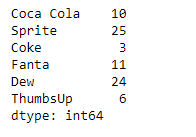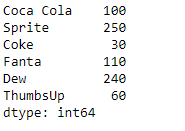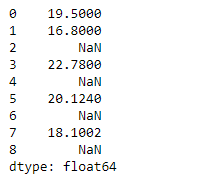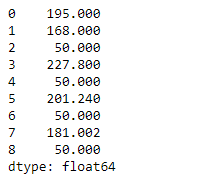Python Pandas Series.multiply()
Pandas系列是一个带有轴标签的一维ndarray。标签不需要是唯一的,但必须是一个可散列的类型。该对象支持基于整数和标签的索引,并提供了大量的方法来执行涉及索引的操作。
Pandas Series.multiply()函数执行系列和其他元素的乘法运算。该操作等同于系列*其他,但支持用一个fill_value来替代其中一个输入的缺失数据。
语法: Series.multiply(other, level=None, fill_value=None, axis=0)
参数:
other:系列或标量值
fill_value :填补现有的缺失(NaN)值
level:在一个级别上进行广播。
返回:结果:系列
例子#1:使用Series.multiply()函数来执行一个标量与给定系列对象的乘法。
# importing pandas as pd
import pandas as pd
# Creating the Series
sr = pd.Series([10, 25, 3, 11, 24, 6])
# Create the Index
index_ = ['Coca Cola', 'Sprite', 'Coke', 'Fanta', 'Dew', 'ThumbsUp']
# set the index
sr.index = index_
# Print the series
print(sr)
输出 :

现在我们将使用Series.multiply()函数来执行标量与序列的乘法。
# multiply the given value with series
result = sr.multiply(other = 10)
# Print the result
print(result)
输出 :

正如我们在输出中看到的,Series.multiply()函数已经返回了给定标量与系列对象的乘法结果。
示例#2:使用Series.multiply()函数来执行一个标量与给定系列对象的乘法。给定的系列对象包含一些缺失的值。
# importing pandas as pd
import pandas as pd
# Creating the Series
sr = pd.Series([19.5, 16.8, None, 22.78, None, 20.124, None, 18.1002, None])
# Print the series
print(sr)
输出 :

现在我们将使用Series.multiply()函数来执行标量与序列的乘法。
# multiply the given value with series
# fill 5 at the place of all the missing values
result = sr.multiply(other = 10, fill_value = 5)
# Print the result
print(result)
输出 :

正如我们在输出中看到的,Series.multiply()函数已经返回了给定标量与系列对象的乘法结果。
 极客教程
极客教程